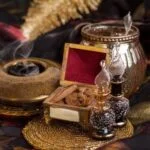In today’s fast-paced world, finding effective ways to relax and unwind has become increasingly important for maintaining a healthy mind and body. Two popular methods that offer both physical and mental rejuvenation are Swedish massage and aromatherapy. But what exactly are these techniques, and how do they differ from each other?
In this article, we will explore the unique aspects of Swedish massage and aromatherapy, examining their origins, techniques, benefits, and key differences. Whether you are seeking stress relief or natural healing remedies, understanding these relaxation therapies can help you make informed decisions about which approach is best suited for your needs.
Swedish massage is a widely recognized technique known for its ability to promote relaxation by using long gliding strokes with varying pressures on muscles, aiming to relieve tension and improve circulation. Originating in Sweden during the early 19th century, this therapeutic practice has since gained popularity worldwide. By targeting specific pressure points on the body, Swedish massage not only eases muscular tension but also improves flexibility and promotes overall well-being.
Aromatherapy, on the other hand, focuses on harnessing the power of essential oils derived from plants to enhance one’s physical and psychological well-being. Dating back thousands of years, aromatherapy has been used across different cultures for its calming effects as well as its potential to alleviate various ailments.
Both Swedish massage and aromatherapy offer unique benefits that can contribute to your overall health. Through targeted manipulation of muscles and release of tension in the body, Swedish massage promotes relaxation while improving blood flow and flexibility.
On the other hand, aromatherapy utilizes the therapeutic properties of essential oils to stimulate your senses through inhalation or absorption into the skin. These oils can have a profound impact on mood improvement, stress reduction, pain relief, immune function enhancement, among many other benefits.
Understanding the key differences between Swedish massage and aromatherapy is essential in order to make the most informed choice for your individual needs. While Swedish massage focuses primarily on physical relaxation and rejuvenation of the body, aromatherapy offers a holistic approach that targets both the mind and body for a comprehensive sensory experience.
Additionally, Swedish massage typically follows a standardized set of techniques, while aromatherapy can be tailored to the individual’s preferences and needs. By exploring these differences, you can assess which therapy aligns better with your desired outcomes.
By delving into the origins, techniques, benefits, and key distinctions between Swedish massage and aromatherapy, this article aims to provide you with a comprehensive understanding of each practice. Whether you are seeking solace from everyday stress or relief from specific ailments, both Swedish massage and aromatherapy offer valuable means of achieving relaxation and enhancing well-being.
As we continue with this article, we will explore each technique in detail so that you can make an informed decision about which approach resonates best with your personal goals and preferences.
What Is a Swedish Massage?
A Swedish massage is a therapeutic massage technique that focuses on promoting relaxation and improving circulation by using a combination of long, flowing strokes, kneading, and gentle stretching. Originating in Sweden in the early 19th century, Swedish massage was developed by Per Henrik Ling, a pioneer in physical therapy and gymnastics.
The main techniques used in Swedish massage include effleurage (long, sweeping strokes), petrissage (kneading movements), friction (deep circular movements with fingertips or thumbs), tapotement (rhythmic tapping or pounding), and vibration (gentle shaking or trembling). These techniques work together to release tension, reduce muscle stiffness, increase blood flow, and promote overall relaxation.
In addition to its physical benefits, Swedish massage has been found to have numerous health benefits. It can help relieve stress, anxiety, and depression by stimulating the production of endorphins – the body’s natural feel-good hormones. It can also improve sleep quality, boost immune function, alleviate pain and discomfort caused by chronic conditions such as arthritis or fibromyalgia, and enhance flexibility and range of motion.
During a Swedish massage session, the therapist targets specific pressure points throughout the body to further enhance its therapeutic effects. These pressure points are believed to correspond to different organs or systems within the body. By applying focused pressure on these points during the massage, it is thought that energy blockages can be released, promoting balance and wellbeing throughout the body.
Overall, a Swedish massage offers a holistic approach to wellness by targeting both the physical and mental aspects of relaxation. Whether you’re looking for a way to unwind from daily stress or seeking relief from specific ailments or conditions, Swedish massage can provide an effective solution for achieving relaxation and promoting overall well-being.
What Is Aromatherapy?
Aromatherapy is a holistic healing practice that utilizes essential oils extracted from plants in order to promote physical, emotional, and mental well-being. The term “aromatherapy” itself refers to the use of scents and aromas to enhance one’s overall health and wellness. This ancient practice has deep roots in various cultures around the world and has been used for centuries as a natural remedy for a wide range of ailments.
Essential oils play a central role in aromatherapy. These highly concentrated plant extracts contain the essence and fragrance of the respective plant they are derived from. Each essential oil carries its own unique therapeutic properties, ranging from calming and soothing effects to invigorating and energizing qualities. For example, lavender oil is often used in aromatherapy for relaxation and stress relief, while peppermint oil can be used for increased alertness and alleviating headaches.
There are several application methods when it comes to aromatherapy. One popular method is through inhalation, where essential oils are diffused into the air or added to hot water for steam inhalation. Inhalation allows the aroma of the oils to directly stimulate the olfactory system, which can have immediate effects on mood and emotions.
Another common application method is topical use, where essential oils are diluted with carrier oils like coconut oil or jojoba oil before being applied to the skin. This allows for absorption into the bloodstream and localized effects on specific areas of the body.
Aromatherapy offers a wide range of benefits for both physical and mental well-being. Some key benefits include stress reduction, improved sleep quality, enhanced relaxation, pain management, improved digestion, boosted immune function, mental clarity, mood enhancement, and increased energy levels. It can also be used as a complementary therapy alongside other treatments or interventions.
Overall, aromatherapy provides a holistic approach to healing by harnessing the power of nature and the therapeutic properties of essential oils. With its long history and diverse range of benefits, aromatherapy is a popular choice for individuals seeking natural remedies and relaxation techniques to promote their overall well-being.
Key Differences Between Swedish Massage and Aromatherapy
Techniques
Swedish Massage and Aromatherapy may both involve therapeutic touch, but their techniques differ significantly. Swedish Massage uses a combination of long, gliding strokes, kneading, friction, and tapping to relax the muscles and promote overall wellness. This massage technique is primarily focused on increasing blood circulation and relieving muscle tension.
On the other hand, Aromatherapy utilizes essential oils extracted from plants to enhance psychological and physical well-being. The oils are often applied through gentle massage or diffusion into the air. While Swedish Massage primarily focuses on manipulating soft tissues with various movements, Aromatherapy focuses more on the inhalation or topical application of aromatic essential oils.
Goals
The objectives of Swedish Massage and Aromatherapy also differ in terms of their intended impact on the body and mind. The primary goal of Swedish Massage is to promote relaxation, reduce stress levels, alleviate muscle tension, and improve circulation. By targeting specific areas with various techniques, it can lead to muscular pain relief and an improved sense of overall well-being.
On the other hand, Aromatherapy aims to enhance mood, reduce anxiety or depression symptoms, and provide a sense of mental calmness by employing the power of scent. The use of essential oils in aromatherapy can stimulate specific receptors in the brain which trigger emotional responses or relaxation.
Main Benefits
Swedish Massage offers a wide range of health benefits beyond relaxation. The manipulation of soft tissues during this therapy can lead to improved flexibility and range of motion. It can also help in reducing scar tissue formation after injury or surgery. Additionally, individuals who receive regular Swedish Massages might experience improved sleep patterns due to reduced anxiety levels.
Aromatherapy has various benefits as well due to its use of essential oils. In addition to improving mood and mental well-being through targeted scents, certain essential oils used in Aromatherapy may have antimicrobial or anti-inflammatory properties. For example, lavender essential oil is often used for relaxation and to promote better sleep, while peppermint essential oil can be invigorating and provide relief for headaches.
Personalized Experience
Another significant difference between Swedish Massage and Aromatherapy lies in their approach to treatment. Swedish Massage generally follows a more standardized practice, where the therapist applies a set sequence of techniques depending on the targeted areas. While it can still be tailored to an individual’s preferences or specific needs, the focus remains on well-established massage principles.
In contrast, Aromatherapy takes a more individualized and tailored approach to treatment. The selection of essential oils and their application methods can vary greatly depending on an individual’s personal preferences or health concerns. Some practitioners may create customized blends of essential oils based on an individual’s specific needs or desired outcomes.
Understanding these key differences allows individuals seeking relaxation therapies to make informed decisions about which technique may best suit their needs and preferences. Whether it’s the focus on manipulating soft tissues through various strokes in Swedish Massage or harnessing the power of essential oils through inhalation or topical application in Aromatherapy, both therapies offer unique benefits that contribute to overall well-being.
Choosing Between Swedish Massage and Aromatherapy
When deciding between Swedish massage and aromatherapy, it is important to consider your specific needs and preferences. Both therapies offer unique benefits and have different approaches, so understanding what you hope to achieve from a massage experience can help guide your decision-making process.
One key consideration when choosing between Swedish massage and aromatherapy is the goal-oriented approach of each therapy. Swedish massage focuses on relieving muscle tension, promoting relaxation, and improving circulation. It uses techniques such as long strokes, kneading, and friction to address specific areas of tension in the body.
On the other hand, aromatherapy utilizes essential oils to enhance relaxation, reduce stress, and promote overall well-being. The aromatic oils are applied through inhalation or skin absorption, creating a sensory experience that can have a calming effect on both the mind and body.
Another factor to take into account is your health condition and safety precautions. While Swedish massage is generally safe for most individuals, it may not be suitable for those with certain medical conditions or injuries. Aromatherapy also has its contraindications, as some essential oils may cause allergic reactions or interact with medications. Therefore, it is important to consult with a qualified practitioner who can assess your specific situation before undergoing either therapy.
Sensory experience plays a significant role in choosing between Swedish massage and aromatherapy. For those who appreciate touch as the primary mode of relaxation, Swedish massage provides a deep tactile experience that can relieve physical tension. In contrast, if you are drawn to scents and ambiance as triggers for relaxation, aromatherapy offers a sensorial journey through the use of aromatic essential oils that create an inviting atmosphere conducive to calmness.
Customization is another aspect that may influence your decision-making process. Aromatherapy treatments are often highly personalized based on an individual’s needs and preferences regarding scent choices and desired effects. In contrast, Swedish massage generally follows a more standardized practice, with specific techniques applied to targeted areas of the body. If you prefer a tailored approach with customized treatment plans and individualized attention, aromatherapy may be the better choice for you.
Combination Therapies
Combining Swedish massage with aromatherapy can create a truly holistic and transformative experience. This section will delve into the benefits of integrating these two therapies, including how they complement each other and enhance the overall effect on the mind and body.
Complementing Techniques
Swedish massage and aromatherapy are both powerful relaxation techniques in their own right, but when combined, their effects can be even more potent. The long, flowing strokes of Swedish massage perfectly complement the therapeutic properties of essential oils used in aromatherapy. The physical manipulation of muscles during a Swedish massage helps to release tension and promote circulation, while the inhalation or absorption of aromatic oils enhances relaxation, reduces stress, and uplifts the mood.
Creating a Special Holistic Experience
The integration of Swedish massage with aromatherapy creates a unique sensory experience that transcends traditional physical healing. As aromatic scents fill the air during a Swedish massage session enhanced by essential oils, it promotes deep relaxation and mental clarity. The combination not only relaxes muscles but also calms the mind, promoting an overall sense of well-being.
Studies have shown that combining Swedish massage with aromatherapy can also help to alleviate specific conditions such as anxiety, depression, and insomnia. The soothing scents from essential oils like lavender or chamomile can help to ease anxiety and promote better sleep. When combined with the physical manipulation of muscles during a Swedish massage, this combination therapy provides a holistic approach to wellness that addresses both physical and emotional needs.
Case Studies and Testimonials
Many individuals have experienced profound benefits from combining Swedish massage with aromatherapy. For example, Sarah suffered from chronic back pain due to her high-stress job. After trying various treatments without success, she decided to try a combination therapy session that included Swedish massage with lavender essential oil. Not only did she experience immediate relief from her physical pain, but she also felt a sense of calm and relaxation that lasted long after the session.
These success stories highlight the potential of integrating Swedish massage and aromatherapy for a more holistic healing experience. By combining the physical manipulation of muscles with the therapeutic scent of essential oils, individuals can achieve a deeper level of relaxation, stress relief, and overall well-being.
How to Choose a Qualified Practitioner for Swedish Massage or Aromatherapy
When it comes to receiving a Swedish massage or aromatherapy treatment, choosing a qualified practitioner is essential to ensure a safe and effective experience. Whether you are seeking the benefits of Swedish massage or the therapeutic effects of aromatherapy, finding the right professional can make all the difference in your overall well-being. Here are some important factors to consider when selecting a massage therapist or aromatherapist:
- Research and Credentials: It is crucial to do thorough research on potential practitioners before making a decision. Look for professionals who have proper training and certifications in their respective fields. A qualified massage therapist should have completed an accredited program and hold a valid license or certification. For aromatherapists, certifications from reputable organizations like the National Association for Holistic Aromatherapy (NAHA) can indicate their expertise and commitment to high standards.
- Recommendations and Referrals: Word-of-mouth recommendations from friends, family, or healthcare providers can be valuable in finding reputable practitioners. Ask for referrals from trusted individuals who have had positive experiences with Swedish massage or aromatherapy. Additionally, online reviews and ratings can provide insight into the quality of services provided by different practitioners.
- Asking the Right Questions: Before scheduling an appointment, it is important to interview prospective practitioners to ensure their competence and compatibility with your needs. Consider asking questions about their years of experience, training background, areas of specialization, and any additional modalities they may offer. It is also important to inquire about their approach to client care and if they have any knowledge or experience working with specific health conditions you may have.
- Safety and Hygiene: When visiting a practitioner’s office or studio, pay attention to the cleanliness of the environment and the equipment used. A reputable professional will prioritize hygiene by using clean linens for each client, properly sanitizing equipment between sessions, and maintaining an organized workspace. Make sure that they follow proper hygiene protocols and use high-quality oils or lotions during treatments.
By considering these factors and taking the time to find a qualified practitioner, you can ensure a safe and effective Swedish massage or aromatherapy experience. Remember that your comfort and well-being should always be a top priority, so don’t hesitate to ask questions and make informed decisions in selecting the right practitioner for your needs.
Conclusion
In conclusion, both Swedish massage and aromatherapy offer unique benefits and can be valuable tools for self-care and overall well-being. Swedish massage focuses on using specific techniques and movements to release tension and promote relaxation throughout the body. The long strokes, kneading, and circular motions used in Swedish massage help to improve blood flow, reduce muscle soreness, and relieve stress.
On the other hand, aromatherapy harnesses the power of essential oils to enhance relaxation and create a calming atmosphere. The inhalation or application of these oils can have a range of effects, from promoting sleep and reducing anxiety to boosting mood and supporting immune function.
When choosing between Swedish massage and aromatherapy, it is important to consider your specific needs and preferences. If you are looking for a more goal-oriented approach that targets specific areas of tension or aims to alleviate pain, Swedish massage may be the better choice for you.
However, if you are seeking a more holistic experience that combines physical relaxation with mental rejuvenation, aromatherapy might be the perfect fit. It is also important to take into account any health conditions or contraindications that may exist, as certain massage techniques or essential oils may not be suitable for everyone.
While both therapies provide their own unique benefits individually, combining Swedish massage with aromatherapy can offer an even greater sense of well-being. The synergistic effect created by integrating these two practices can deepen relaxation further and enhance the overall experience. Many individuals have reported experiencing increased levels of tranquility when combining these therapies.
When selecting a practitioner for either therapy, it is crucial to do thorough research and consider their credentials. Recommendations from trusted sources or referrals from friends or family members who have had positive experiences can also be helpful in finding reputable professionals. It is wise to interview prospective practitioners to ensure their competence and compatibility with your needs. Additionally, hygiene standards should never be overlooked when selecting a practitioner.
Frequently Asked Questions
What is a Swedish massage with aromatherapy?
A Swedish massage with aromatherapy is a therapeutic massage technique that combines the benefits of a traditional Swedish massage with the use of essential oils. The massage therapist will use long, flowing strokes to relax and loosen the muscles, while also incorporating specific techniques to address tension and knots in the body.
At the same time, aromatherapy is introduced by diffusing or applying essential oils onto the client’s skin. These oils are carefully selected for their fragrance and therapeutic properties, aiming to enhance relaxation, mood, and overall well-being during the massage session.
What is the difference between aromatherapy and oil massage?
The main difference between aromatherapy and oil massage lies in their primary objectives and approaches. Aromatherapy primarily focuses on enhancing one’s physical and mental well-being through the inhalation or topical application of essential oils. It emphasizes the power of scent in improving mood, relieving stress, promoting relaxation, boosting energy levels, or even targeting specific health concerns.
On the other hand, an oil massage refers to a massage technique where various types of oils are utilized to facilitate smooth gliding movements over the client’s skin. Typically, these oils serve as lubricants to reduce friction during massage sessions but may not incorporate aromatic compounds or have specific therapeutic benefits beyond moisturizing the skin.
Which is better aromatherapy or deep tissue massage?
Determining whether aromatherapy or deep tissue massage is better depends on an individual’s needs and preferences. Aromatherapy can be beneficial for those seeking stress relief, mood enhancement, improved relaxation, or a sensual experience involving pleasing scents. Essential oils used in aromatherapy massages can positively affect emotions and provide an immersive sensory experience during the treatment.
Deep tissue massage, on the other hand, targets deeper layers of muscles and connective tissues to release chronic tension or pain caused by musculoskeletal issues or sports injuries. It involves applying focused pressure using slow strokes and can greatly alleviate tightness and soreness in overworked muscles. Ultimately, what is “better” depends on what specific outcome a person desires from the massage and their individual physical condition at the time.

Are you looking for a natural way to improve your health and wellbeing?
If so, aromatherapy may be the answer for you.





